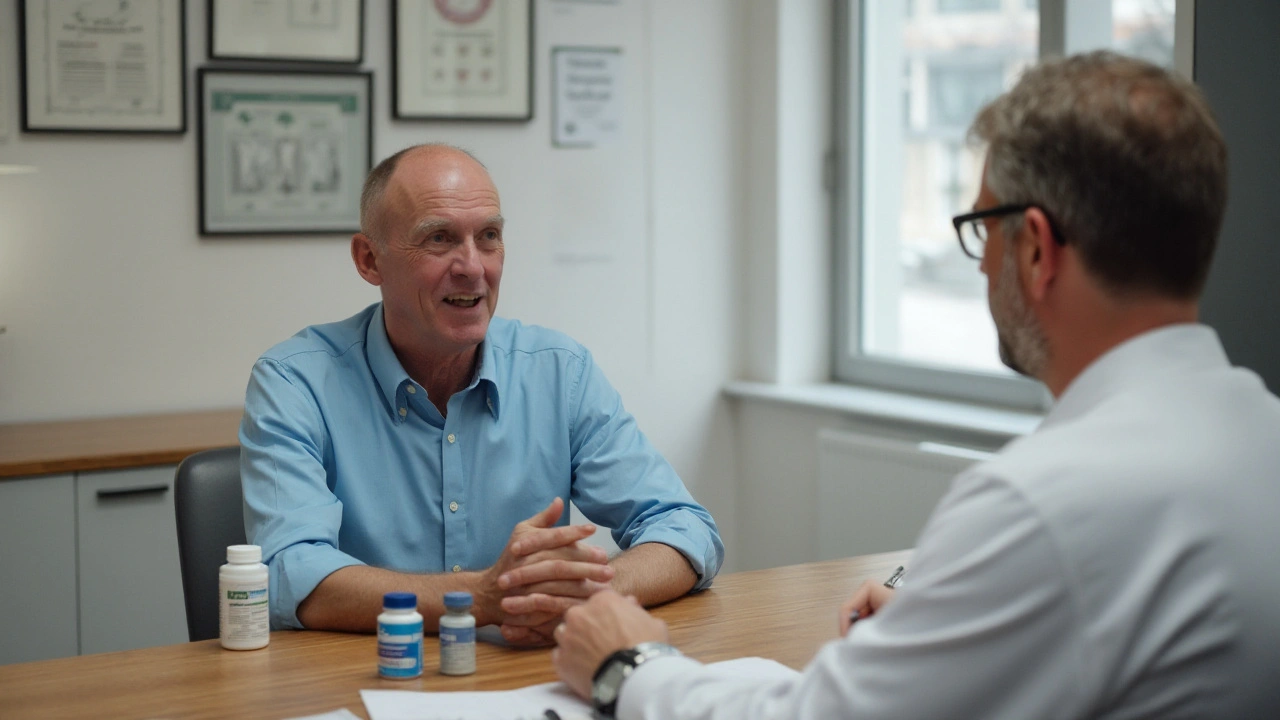Rogaine (minoxidil): what it does and how to use it right
Rogaine is a brand name for topical minoxidil, a medicine many people use to fight thinning hair. It’s not a miracle cure, but when used correctly it can slow hair loss and help some people regrow hair, especially on the crown. This page gives clear, practical advice so you know what to expect and how to avoid common mistakes.
How Rogaine works and what to expect
Minoxidil widens blood vessels in the scalp and prolongs the growth phase of hair follicles. The 5% foam or solution is a common choice for men; women often use 2% or a 5% foam made for women. Clinical trials show measurable increases in hair count after a few months, with many users seeing visible change by three to six months. If you stop using it, any gains usually fade within months, so consistency matters.
Expect some early shedding during the first weeks — that’s old hair making way for new growth. Don’t panic: if shedding is heavy or sudden, see a doctor. Rogaine works best for recent thinning on the crown; it’s less likely to restore a fully receded hairline.
Safe use, side effects, and smart tips
Apply to a dry scalp twice a day using the amount the product instructs. Let it dry fully before lying down or using other hair products. Common side effects are scalp irritation, itching, or dry flakes. Rarely, some people feel dizziness or notice fast heartbeat — if that happens, stop use and contact your doctor.
Do not use during pregnancy or breastfeeding. Avoid broken or inflamed skin. If you take blood pressure medication, tell your doctor before starting topical minoxidil — systemic absorption is low but worth checking.
Want better results? Be consistent, use the right concentration, and combine approaches when appropriate. For many men, pairing topical minoxidil with an oral DHT-blocker like finasteride gives better results than either alone. If you prefer non-prescription routes, evidence for saw palmetto or pumpkin seed oil is mixed — they may help a little but rarely match prescription treatments.
If you’re curious about other options, low-level laser therapy, platelet-rich plasma (PRP), and hair transplant surgery are alternatives that some people choose after discussing risks and costs with a specialist. See a dermatologist if your hair loss is sudden, patchy, accompanied by scalp pain, or if you want a personalized plan.
On MedixRX under the Rogaine tag you’ll find guides and comparisons to help you pick the right route. Example reads:
- Natural DHT Blockers for Hair Loss: Do They Really Rival Finasteride? — medixrx.su/?p=25788
Got specific questions about using minoxidil, side effects you’re seeing, or how to combine treatments? Ask here or check the linked guides for step-by-step tips.
Top 5 Propecia Alternatives for Hair Loss in 2024
Exploring the top alternatives to Propecia in 2024, this article delves into various treatments for hair loss, each with unique benefits and drawbacks. From medications like Rogaine and Avodart to therapies like PRP and LLLT, and even surgical options such as hair transplants, find the right solution for your needs. Understand the effectiveness, side effects, and financial implications of these alternatives. Whether you're seeking drug-based treatments or a more natural approach, discover effective methods for combating hair loss.

